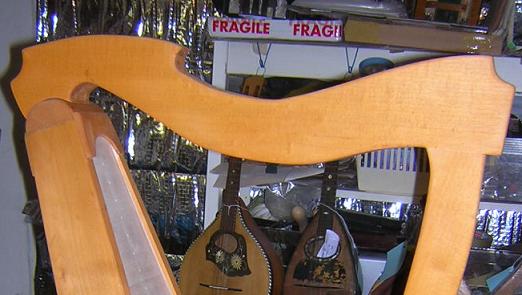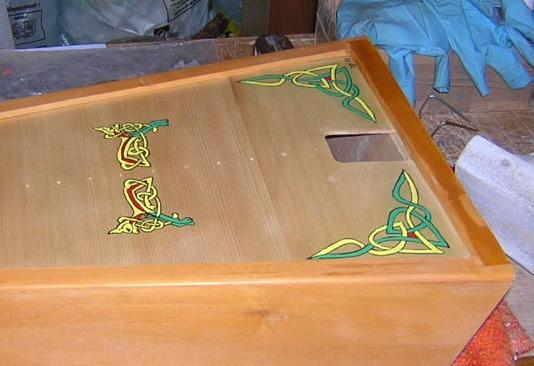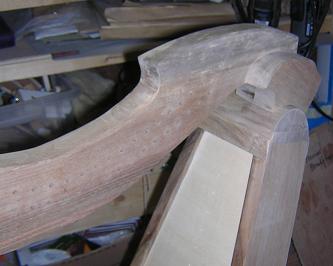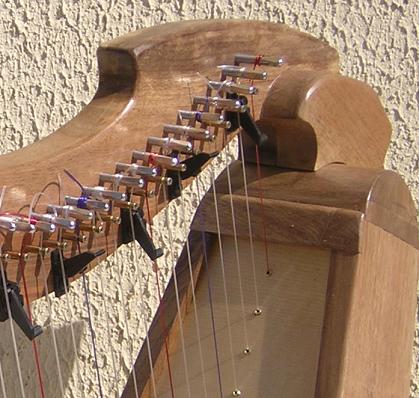| A variety of possibilities offered themselves as to how the harp would be finished. There is no advice really in the plans about finishing. | |
 |
This harp was made from maple, with a maple
back and spruce sound-board. I decided to leave the back and front
natural, but stained the maple body which was very pale.
|
 |
Before finishing, I decided to paint a celtic pattern on the sound board. This I did with water based acryllics, having traced the design onto the wood first.
|
 |
The next step, not especially photogenic, was repeated finishing and sanding with progressively finer paper, until the desired finish was built up. I used Tru-oil wiping varnish, which is light and hard, and relatively easy to apply.
|
 |
The second harp was made from
walnut, much darker than the maple instrument, so I decided to leave the
natural wood colour. This made finishing simpler as well.
It was sanded progressively with finer and finer paper, from 80 grit, right up to 1500 grit. A long and time-consuming task.
|
 |
I chose to protect the wood with a with a shellac based finish. I used Mylands Sanding Sealer, which can be applied in a day. After 4 coats, the result was very pleasing. A harp is not an instrument likely to be handled heavily, so I thought this finish sufficient, and it has given the walnut a soft warm natural lustre. |